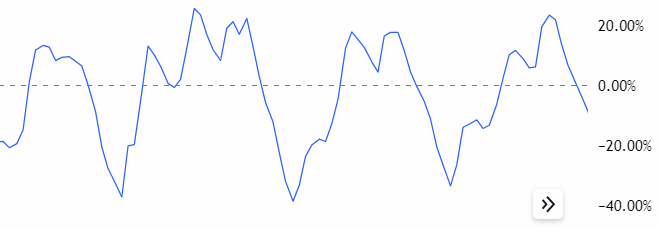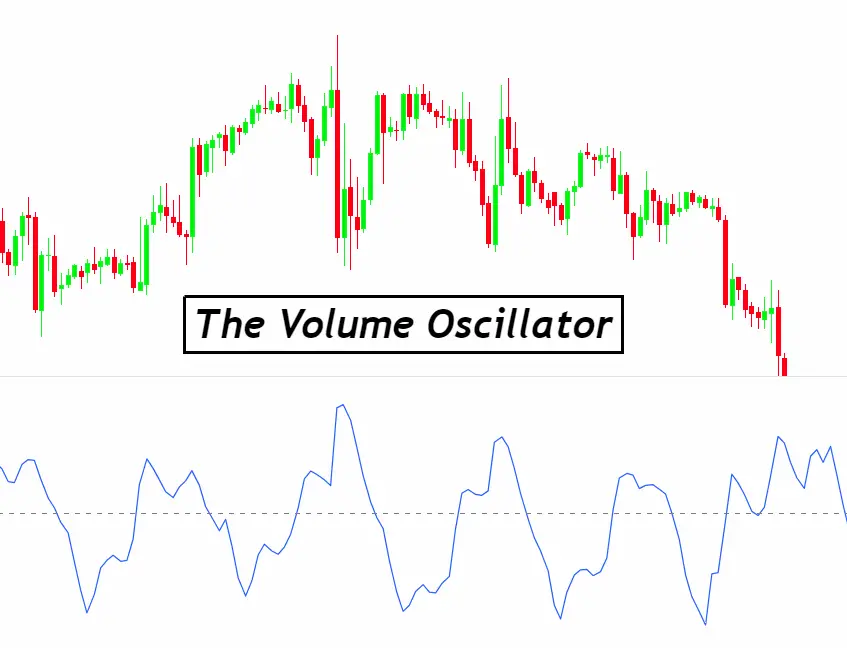The Volume Oscillator doesn’t just measure volume; it reveals the momentum behind it, offering insights into whether buying or selling pressure is increasing or decreasing. This insight is invaluable for traders looking to gauge market sentiment and make informed decisions.
In this blog, we’ll dive deep into the Volume Oscillator, exploring how it works, its benefits, and practical tips for integrating it into your trading approach. Whether you’re a seasoned trader or just starting out, understanding the Volume Oscillator can significantly improve your trading outcomes. Let’s embark on this journey to master forex trading volume with the Volume Oscillator.
Understanding the Mechanics of the Volume Oscillator
The Volume Oscillator stands out as a pivotal tool in forex trading, offering a clear window into the market’s volume dynamics. At its core, this indicator operates by comparing two moving averages of volume, shedding light on the underlying momentum and potential shifts in market activity.
Here’s a breakdown of how the Volume Oscillator functions:
- Calculation Essentials: The Volume Oscillator measures the difference between a fast and a slow volume moving average. Typically, traders might use a short-term average (like 5 days) and a longer-term one (such as 20 days).
- Momentum Insight: When the short-term volume exceeds the long-term average, the Volume Oscillator moves above zero, signaling rising market activity and potential bullish momentum. Conversely, when the short-term volume falls below the long-term average, the indicator dips below zero, hinting at declining market activity or bearish momentum.
- Trend Identification: This simple yet effective mechanism allows traders to quickly identify shifts in volume trends, offering a preemptive glimpse into potential price movements.
By mastering the Volume Oscillator, traders can harness the power of volume trends, adding a robust layer to their market analysis toolkit. This indicator doesn’t just highlight volume changes; it decodes the market’s pulse, providing traders with a strategic edge in the fast-paced world of forex trading.
Key Benefits of Using Volume Oscillator
Unlocking the Advantages of the Volume Oscillator in Forex Trading
The Volume Oscillator is not just another indicator; it’s a critical tool that offers a myriad of benefits to enhance your forex trading strategy. Here are the key advantages of integrating the Volume Oscillator into your trading approach:
- Early Trend Detection: It excels in revealing shifts in market momentum before they become apparent in price movements, giving traders a head start in identifying potential trends.
- Enhanced Decision Making: By providing insights into volume trends, the Volume Oscillator aids in making more informed entry and exit decisions, improving overall trading performance.
- Divergence Recognition: Spotting divergences between volume trends and price movements can signal potential reversals, offering strategic trading opportunities.
- Market Sentiment Gauge: This tool acts as a barometer for market sentiment, helping traders understand the strength behind price movements.
- Complementary Analysis: When used alongside other indicators, the Volume Oscillator can confirm hypotheses or signal caution, adding depth to market analysis.
Incorporating the Volume Oscillator into your forex trading toolkit can significantly amplify your market analysis capabilities, providing a clearer understanding of volume dynamics and their impact on price movements.
How to Interpret Volume Oscillator Signals
Mastering Volume Oscillator Signals for Enhanced Forex Trading
Interpreting the signals from the Volume Oscillator can significantly improve your trading strategy by providing timely insights into market dynamics. Here’s how to read and act on the signals from this powerful indicator:
- Above Zero Line: When the Volume Oscillator is above the zero line, it indicates that the short-term volume average is higher than the long-term average, suggesting bullish momentum. This can be a sign to consider long positions.
- Below Zero Line: Conversely, if the Volume Oscillator is below the zero line, the short-term volume average is lower than the long-term average, indicating bearish momentum. Traders might view this as a cue for potential short positions.
- Rising Oscillator: A rising Volume Oscillator suggests increasing volume momentum, possibly signaling the strengthening of the current trend. This can reaffirm your confidence in holding positions in line with the trend.
- Falling Oscillator: A falling Volume Oscillator points to declining volume momentum, which might indicate the weakening of the ongoing trend or a potential reversal. Caution and reevaluation of positions may be warranted.
- Divergence: Pay attention to divergences between the Volume Oscillator and price action. A bullish divergence occurs when the oscillator makes higher lows while the price makes lower lows, potentially signaling a reversal to the upside. A bearish divergence happens when the oscillator makes lower highs while the price makes higher highs, suggesting a possible downward reversal.
By adeptly interpreting these signals, traders can leverage the Volume Oscillator to make more informed decisions, aligning their strategies with the underlying volume trends for better trading outcomes.

Practical Tips for Your Trading Strategy
Incorporating the Volume Oscillator into your forex trading strategy can significantly enhance your market analysis and decision-making process. Here are some practical tips to effectively implement this powerful tool:
- Use in Conjunction with Other Indicators: The Volume Oscillator provides valuable insights into market volume trends, but it’s most effective when used alongside other indicators like Moving Averages, RSI, or MACD for confirmation and a more comprehensive market analysis.
- Consider Market Context: Always interpret Volume Oscillator signals within the broader market context. Volume trends can be influenced by various factors such as economic news releases or geopolitical events, which should be considered in your analysis.
- Set Appropriate Time Frames: Tailor the Volume Oscillator settings to match your trading style. Day traders might prefer shorter moving average periods, while swing traders may opt for longer periods to capture broader market trends.
- Monitor Divergences Carefully: Divergences between the Volume Oscillator and price action can be powerful signals for potential reversals. Pay close attention to these discrepancies and prepare for possible shifts in market direction.
- Practice Risk Management: No indicator is foolproof. Implement sound risk management strategies, such as setting stop-loss orders and only risking a small percentage of your trading capital on any single trade.
- Backtest Your Strategy: Before fully integrating the Volume Oscillator into your live trading strategy, backtest it on historical data to understand how it performs in different market conditions and refine your approach accordingly.
By following these practical tips, you can effectively integrate the Volume Oscillator into your forex trading strategy, leveraging its insights to make more informed trading decisions and enhance your overall trading performance.
Common Mistakes to Avoid
Navigating its use in forex trading can significantly enhance your market analysis, but it’s essential to be aware of common pitfalls. Avoiding these mistakes can help you utilize this tool more effectively:
- Overreliance on a Single Indicator: Relying solely on the Volume Oscillator for trading decisions is a common misstep. Always corroborate its signals with other indicators and market analysis to make well-rounded decisions.
- Ignoring Market Context: Failing to consider the broader market context can lead to misinterpretation of Volume Oscillator signals. Economic events, news, and other market sentiments should inform your analysis.
- Misreading Divergences: Divergences can be strong signals, but misinterpreting them is easy. Ensure a thorough understanding and confirmation before acting on these signals.
- Inappropriate Time Frame Settings: Using time frame settings that don’t align with your trading style can lead to misleading signals. Customize the settings to suit your specific trading approach.
- Lack of Risk Management: Not implementing proper risk management when trading based on Volume Oscillator signals can lead to significant losses. Always use stop-loss orders and manage your trade sizes to protect your capital.
- Expecting Perfect Signals: No indicator, including the Volume Oscillator, provides perfect signals every time. Expecting flawless predictions can lead to frustration and risky trading decisions.
By avoiding these common mistakes, you can more effectively integrate the Volume Oscillator into your forex trading strategy, enhancing your ability to make informed decisions and manage risks.
Conclusion
The key to harnessing the full potential of the Volume Oscillator lies in understanding its signals, integrating it with other analytical tools, and applying it judiciously within the broader context of market conditions and events. By avoiding common pitfalls such as overreliance on a single indicator or misinterpreting signals, traders can leverage the Volume Oscillator to enhance their market analysis and trading performance.
As we conclude, remember that the journey to forex trading mastery is continuous. The Volume Oscillator, with its unique insights into volume dynamics, is a valuable companion on this journey. Embrace it as part of a holistic trading strategy, always backed by sound risk management practices and an eagerness for ongoing learning and adaptation.


